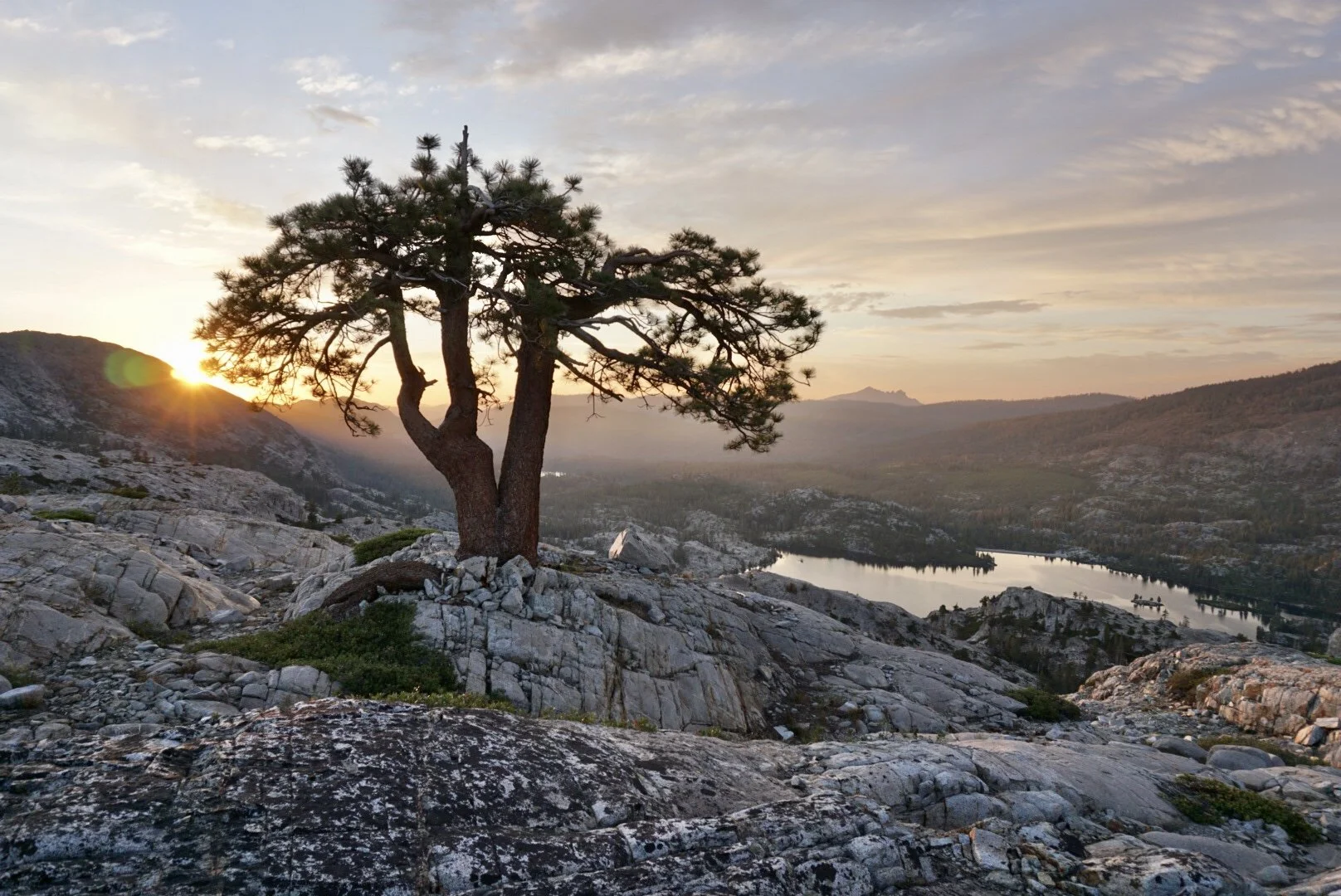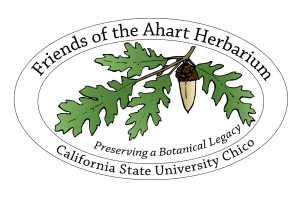



The Ahart Herbarium: Collections, Databases, and Collecting for the Future
Herbarium specimens form an invaluable record of plant diversity and distribution. Join the Curator of the Ahart Herbarium, Lawrence Janeway, to hear about the importance of collecting plant specimens, how anyone can do it, and get some helpful hints on how you can ensure that what you collect is useful to the herbarium and researchers in general.

Forest Management in a Hot and Fiery Future: Lessons from the 2024 Park Fire
The 2024 Park Fire impacted a diverse range of woodland and forest habitats, including the Beaver Creek Pinery, a unique old-growth forest shaped by frequent fires. Join US Forest Service Research Ecologist Eric Knapp to learn about the factors that allowed the Pinery to withstand historical fires and how his research may inform forest management strategies under today’s fire climate.
View the presentation here.

Restoring Land with Fire
Fire is an integral process in many California Ecosystems which have largely been shaped through Indigenous fire stewardship. In this presentation, Dr. Don Hankins will illustrate the interconnected nature of Indigenous knowledge to shape ecocultural relationships through fire stewardship to restore ecosystems and enhance climate and social resilience.
View the presentation here.

Research and Conservation of Rare Alkali Wetland Plant Species in the Southern Great Basin and Mojave Deserts
Join Naomi Fraga, Director of Conservation Programs at the California Botanic Garden, to learn about rare alkali wetland plants and her research supporting conservation of four at-risk species.
View the Presentation Here

2024 Annual Meeting and Special Presentation
Join Aaron Sims, Director of the Rare Plant Program for the California Native Plant Society (CNPS) to celebrate five decades of rare plant conservation and the people that make it possible.
View the presentation here.

“Part-2” of Two Decades of Botanical Explorations in Northern California with Lowell Ahart
During the first portion of this pictorial reminisce (All Things Botanical, May 16, 2024), John Dittes introduced us to Lowell, retired rancher and farmer, renowned Northern California botanist and plant collector, and namesake of the Herbarium at CSU Chico. We learned of Lowell’s early days, growing up on The Peter Ahart Ranch, and how he became the accomplished botanist we know today. We’ll continue from there, enjoying photos and stories of botanical projects, Northern California landscapes, and interesting people met along the way, from 2013 to present.
View the presentation here.

A Closer Look at Selected Relationships Between Bees, Flowers, and People
Dr. Frankie will touch on a variety of topics that illustrate his concern for pollinator conservation: The use of bee hotels (pros and cons), collecting pollinators, data basing of collections and value of museums, bee conservation and the need for citizen action. He will also discuss developing pollinator habitat gardens and native versus non-native plants in these gardens.
View the presentation here.

The Flora of Nevada County, California…Including some Notable New Collections
Nevada County and the cross-section of the Sierra Nevada it spans offer diverse habitats and a diverse set of plant species that inhabit them. For the first time, a true Flora of Nevada County is in the works. Join Shane Hanofee to hear about the process of making a flora, the botanical history of Nevada County, and some exciting discoveries made in the production of this work.
View the presentation here.

Two Decades of Botanical Adventures with Lowell Ahart (2002-2024); A Pictorial Overview of Our Work and Explorations of Northern California Landscapes
Join us as we reminisce on the botanical works and travels of renowned Northern California botanist and plant collector Lowell Ahart, in accompaniment of John and his life and business partner, Josephine. Seasoned botanists and those “new to botany” alike will enjoy this story and visual overview of the landscapes explored, botanical discoveries made, and interesting people met along the way.
View the presentation here.

Wildflowers of Table Mountain: Life between Rock and Water
Every year, thousands of visitors traverse North Table Mountain Ecological Reserve in Butte County, California. Most are drawn to the spectacular patterned displays of native wildflowers that peak for a few weeks during each spring. Which species are responsible for these displays? And how do the climate, geology, and hydrology of the Table Mountain mesa combine to create these striking floral designs? Learn from our speaker, Samantha (Sam) Hillaire, who is a co-author of the popular field guide, “Wildflowers of Table Mountain, a Naturalist’s Guide.”
View the Presentation Here.

Hog Lake vernal pool and Rancho Briesgau riparian restoration – Bureau of Land Management’s Sacramento River Bend ACEC
Join BLM biologist Steve Laymon and botanist Brooke Thompson to learn about the unique flora of Hog Lake and the exciting Rancho Briesgau riparian restoration project in Tehama County.
View the presentation here.

Look and You Will Find: A Snapshot of Biodiversity in the Lassen Foothills of California
Andrea Craig will take you on a tour of the rugged, remote, and richly biodiverse landscape of the Lassen Foothills. This conservation story will focus on Dye Creek Preserve and is about getting to know an elusive volcanic landscape, with over a century of grazing and development, and the diversity that has persevered.
View the presentation here.

Seedbank Research in a Restored Wetland: Past, Present, Future
Through soil seedbank studies ‘lost’ vegetation may be rediscovered, past composition highlighted, resiliency potential established and future trajectory imagined. Join Chico State Masters student Kaylie DeLuca to hear about her research on the seedbank of a restored meadow in Lassen Volcanic National Park.
View the presentation here.

Bombus – Living With, and the Natural History of - Bumble Bees
Bumble bees are among the most charismatic, noticeable (visible and audible!), as well as critically important pollinating insects. In this talk, John Whittlesey will share photos taken over the last 8 years of bumble bees while weaving a discussion of their life history along with anecdotes of “living with bumble bees,” ending the talk with plants to plant if you too would like to invite bumble bees to live in your garden.
View the presentation here.

2023 Annual Meeting and Special Presentation
Join botanist Rob Preston to learn about the geophyte life style. Rob will share some of the findings from his research on Brodiaea and Dipterostemon and provide an overview of geophytes in the California flora.
View the presentation here.

What We Sow: The Personal, Ecological, and Cultural Significance of Seeds
Join author and radio host Jennifer Jewell to explore how the power of gardens and gardeners can be viewed through a lens of seeds, and the general state of seeds in our gardened lives: how they grow, where they grow, who grows them, who sells and/or controls them, and their care up and down the seedsheds of our world.
View the presentation here.

Eriogonum (wild buckwheats) of California With Emphasis on Subgenus Oligogonum
Join Travis Columbus, Research Scientist at the California Botanic Garden, to learn about Eriogonum, one of the most diverse genera of California native plants. Travis will give an overview of California's wild buckwheats with a focus on the Oligogonum subgenus and including new findings from his research.
View the presentation here.

An Introduction to Chico State’s Conservatory
Join Shaine Hill, the Chico State Biological Sciences Greenhouse Manager, to learn about the unique plants in the greenhouse, some of the accomplishments over the past year, and exciting plans for the Conservancy’s future.
View the presentation here.

Stonecrops of Sedum section Gormania
Learn about the beautiful—and sometimes confusing—Sedums in section Gormania. Barbara Wilson, coauthor of the revised taxonomic treatment of the species, will guide us through the recent research and remaining mysteries surrounding this unique group of succulents.
View the presentation here.

Whiskeytown: A Goldmine of Botanical Treasures
Join Chris McCarron from the Great Basin Institute to learn about the rich flora and exciting recent discoveries at the Whiskeytown National Recreation Area.
View the Presentation Here.

Distribution and Ecology of Vernal Pools
Carol Witham will help us to explore the short-lived, weird-looking, fascinating fauna that evolved millions of years ago, and dazzling swaths of tens of thousands of tiny flowers that change from week to week through a two- to- three month “season”.
View the presentation here.

Creating High Value Habitat in the Built Environment
Join restoration ecologist Pat Reynolds to learn about the steps that go into the design, implementation and maintenance of habitat gardens dominated by native herbaceous vegetation and include the incorporation of habitat features designed to maximize ecological values and habitat function.
View the Presentation Here.

The Fabulous Flora of California’s Desert Region
This talk will briefly discuss the ecology and natural history of the California Deserts, explore the adaptations of plants not only growing, but thriving in these environments, and take a virtual floristic tour of some of the beautiful desert wildflowers found in this region.
View the presentation here.

A Sight For Sori: Ferns of the Northern Sierra Nevada
Shane Hanofee will take you on a tour of the ferns of the northern Sierra Nevada, discussing identification tips, highlighting adaptive traits, and sharing interesting factoids that will have you pushing past the flowers and cones in pursuit of fronds to flip.
View the presentation here.

Timing Is Everything: What Preserved Specimens Can Tell Us About Risks for Plant-Pollinator Interactions
Do alpine communities experience greater plant-pollinator phenological mismatch than lowland habitats? Join Laura Lampe to hear about her research utilizing herbarium and insect specimen data to examine changes in the timing of flowering and flight periods of plants and pollinators in Northern California.
View the presentation here.

EcoFlora for Everyone: Engaging your community in observing nature
Join Jennifer Ackerfield from the Denver Botanic Garden to learn about EcoFlora, an innovative program model for connecting people to plant life and plant science through public gardens in urban areas.
View the presentation here.

Learn to Love Those Latin Names
Scientific names provide a common language to discuss and learn about plants from around the world. Join botanist and author, Ann Willyard to learn about scientific names for plants and how using them can strengthen collaborations between native plant enthusiasts, amateur naturalists, and academic botanists.
View the presentation here.

Adventures in the Native Plant Program of the UC Santa Cruz Arboretum and Botanic Garden
Join Brett Hall to learn about the wide ranging California native plant programs at the UC Santa Cruz Arboretum and Botanic Garden.
View the presentation here.

Hey, Hey we’re the Monkees! We’re too busy evolving to put anybody down
Identifying a monkeyflower to species isn’t quite as straightforward as it used to be, but don’t be discouraged! Join Steve Schoenig to become more familiar with the currently recognized monkeyflower species and get some tips to accurately identify these charismatic little plants.
View the presentation here.

The Genus Clarkia – Botanical Adventures and Conservation Potential
Join Bureau of Land Management Biologist, Steve Laymon, to learn about Clarkias, a beautiful and complex group of western North American wildflowers.

